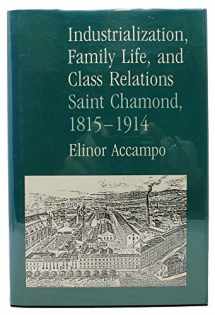
Industrialization, Family Life, and Class Relations: Saint Chamond, 1815-1914
ISBN-13:
9780520060951
ISBN-10:
0520060954
Edition:
First Edition
Author:
Elinor Accampo
Publication date:
1989
Publisher:
University of California Press
Format:
Hardcover
320 pages
FREE US shipping
on ALL non-marketplace orders
Marketplace
from $2.99
USD
Marketplace offers
Seller
Condition
Note
Seller
Condition
Used - Very Good
Book details
ISBN-13:
9780520060951
ISBN-10:
0520060954
Edition:
First Edition
Author:
Elinor Accampo
Publication date:
1989
Publisher:
University of California Press
Format:
Hardcover
320 pages
Summary
Industrialization, Family Life, and Class Relations: Saint Chamond, 1815-1914 (ISBN-13: 9780520060951 and ISBN-10: 0520060954), written by authors
Elinor Accampo, was published by University of California Press in 1989.
With an overall rating of 3.5 stars, it's a notable title among other
books. You can easily purchase or rent Industrialization, Family Life, and Class Relations: Saint Chamond, 1815-1914 (Hardcover) from BooksRun,
along with many other new and used
books
and textbooks.
And, if you're looking to sell your copy, our current buyback offer is $0.57.
Description
In this provocative study, Elinor Accampo explores the interrelationship between the structure of work and strategies of family formation in Saint Chamond, a French city that underwent intensive industrialization during the nineteenth century. Through a detailed analysis of fertility, mortality, marriages, and migration, the author analyzes the ways in which the family responded to changes in the organization of work. In the first half of the nineteenth century work was in the home, and families tended to be large in order to meet the demand for workers. But by the 1860s the mechanization of labor had begun to separate family life and work life, fundamentally transforming the relationship between work and family and making the survival of the working-class family more difficult. Accampo argues that workers began to have smaller families much earlier than has previously been suggested, and she demonstrates that fertility declined for reasons unique to working-class conditions. This decline in family size, and the context in which it took place, provides fascinating new material for understanding the working class world and the dynamics of class relations.


We would LOVE it if you could help us and other readers by reviewing the book
Book review

Congratulations! We have received your book review.
{user}
{createdAt}
by {truncated_author}


